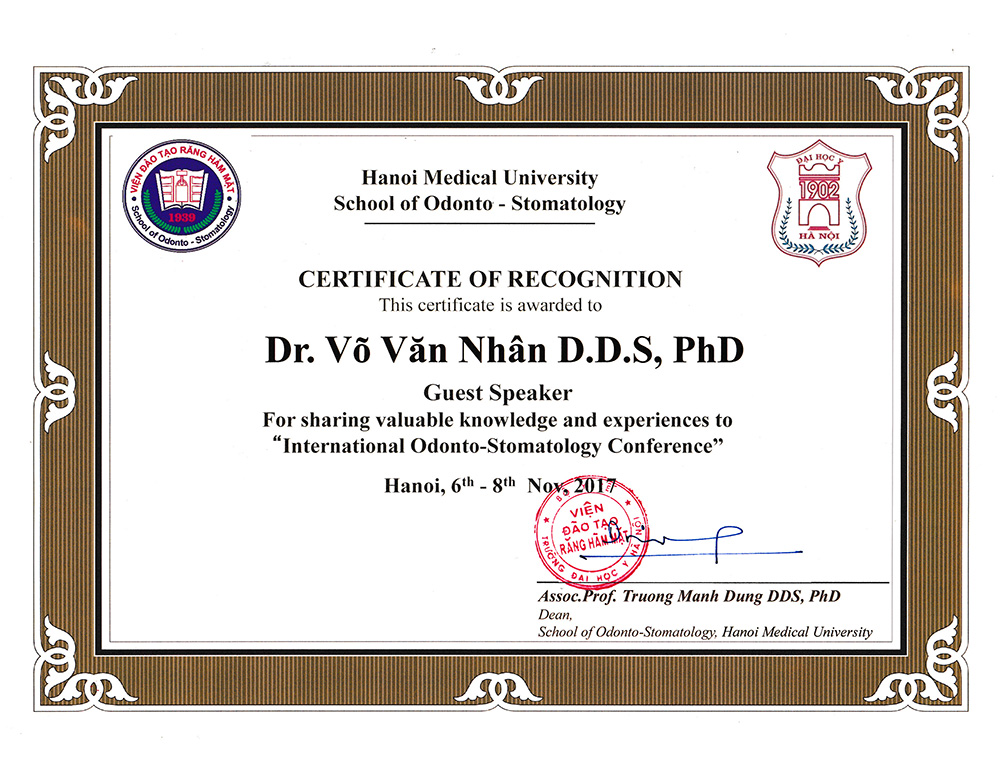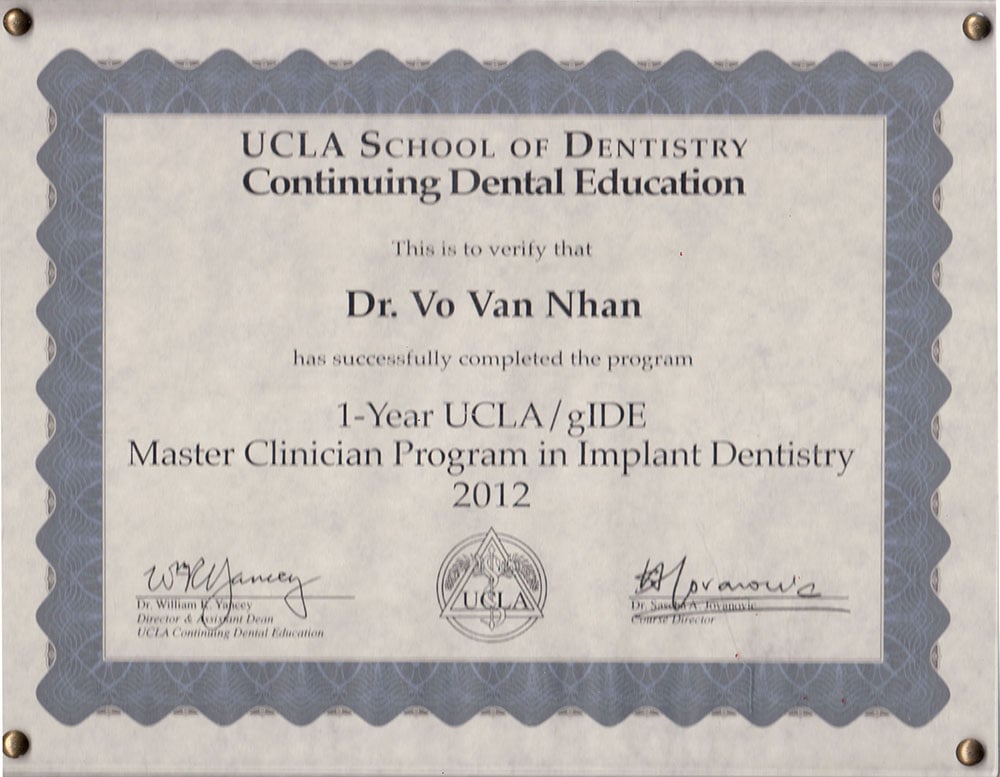Avoid pulpal death during fixed prosthodontic procedures
By GORDON J. CHRISTENSEN, D.D.S., M.S.D.,Ph.D.

In my many discussions with practicing dentists around the world, it has become obvious that practitioners have differing beliefs about the relationship of fixed prosthodontics and the need for endodontic therapy. This range of beliefs is wide. Some dentists report that they would prefer to do endodontic therapy on all teeth requiring crowns before accomplishing fixed prosthodontic procedures, while others state that they infrequently need to do endodontics after placing fixed prostheses.
It is apparent that there are some challenges related to keeping teeth free form endodontic therapy when accomplishing fixed prosthodontics. After many years of being in prosthodontic pratice, completing thousands of crowns and having discissions with hundreds of practitioners, I present the following personal observations that may help practitioners avoid the frustration of endodontic therapy after crowns or fixed prostheses have been cemented.
Building up teeth can be traumatic to pulps
Buidups are used when there is a questionalbe amount of tooth structure remaining to support crowns or fixed prostheses. It is logical to assume that tooth preparations for buildups are used when minimal tooth structureis left between the preparation surface and the dental pulp.
Tooth buildup materials and bonding agents can be irritating to dental pulps. The most popular tooth buildup material today is resin-based composite, but amalgam still is used for this purpose. To avoid having the buildup material contribute to the need for endodontic therapy. I suggest using one of the currently available self-etching primer before placing resin-based composite, or using a 4-methacryloxyethyl trimelilitic anhydride, or 4-META, product such as Amalgambond (Parkell, Farmingdale, N.Y.) before placing amalgam.
Cement irritation of the pulp
In the past, cements that irritated pulps were one of the most common reasons for postcrown cementation endodontic therapy. However, resin-reifored glass ionomer cements such as RelyX Luting cement (3M, St. Paul, Minn.) and Fuji Plus (GC America, Alsip, III.) have become the most popular types of cement used in the United States. These low-irritation cements have reduced significantly the postoperative tooth sensitivity problem related to cementation. I recommend continued and expanded use of this type of cement.
Cutting instruments
Some dentists use rotary cutting instruments long past their expected longevity. "One-use" burs and diamonds are available at a cost of about $1, so it seems logical to me that one-use cutting instruments should be the instruments of choice. They avoid the uncertainty of cutting effectiveness that is present with the more expensive repeated-use rotary instruments.
Tooth dehydration
Tooth preparations for crowns require removal of most of the tooth enamel. Dentinal canals are opened by the tooth preparation procedure, and prepared teeth are highly susceptible to dehydration. making adequate impressions requires a dry field, and there is a tendency to overdry tooth preparation while attempting to make good impressions. Proper soft-tissue management an minimal tooth drying are suggested to avoid pulpal damage from tooth dehydration.
Handpiece nonconcentricity
Handpiece nonconcentricity is one of the problems most frequently encountered when removing a significant amount of tooth structure. After many heat sterilizations have taken their toll on a typical high-speed handpiece, the concentricity of the handpiece is reduced or eliminated. The lack of concentricity causes a "beating" action on the tooth preparation and potential trauma to the pulp. Dentists are advised to observe the concentricity of rotary cutiing instruments in the handpiece chuck. When it is obvious that burs are not rotating in a concentric manner, it is time to repair or replace the handpiece.
Cutting instrument load
Air-rotor handpieces should cut using a light touch. In some offfices, however, significant variation in the sound of the air rotor indicates that operator is cutting at near the maximum load of the handpiece. It is advisable to place only enough load on the rotary instrument to cut teeth easily while using an adequately sharp rotary instrument. If the cutting instrument is dull or the concentricity of the handpiece is poor, more load must be placed on the cutting instrument to remove tooth structure in a reasonable amount of time. High-load cutting causes more heat buildup, and the often-nonconcentric rotary cutting instrument causes heavey vibration.
Occlusal prematurities
Crowns or fixed prostheses placed in high occlusion soon become a problem. The abutment teeth and the teeth in the opposing arch become sensitive. I suggest carefully evaluating all crowns or fixed prostheses at the tiem of seating to determine if the occlusion is too high or too low. Use thin articulating ribbon such as Accufilm 2 (Parkell) or Madam Butterfly (Almore, Portland, Ore.). Some beginning practitioners may mistakenly feel that occlusion that is too low is acceptable for new restorations because patients do not complain. Patients may accept the low occlusion for a day or two, but eventually the teeth adjacent to the newly placed low restoration become painful because of the increased load, and some of these teeth may crack under the added load.
Tooth is nonvital at the start of the procedure
Highly restored teeth or those with questionable pulps should be analyzed carefully before beginning tooth preparation. If the pulp vatality is questionable, it is better to accomplish endodontic therapy befor tooth preparation than to gamble on whether endodontic therapy will be needed in the future. It is my opinion that many crowns are placed on untreated, nonvital teeth, and a few months or years later the teeth become symptomatic and endodontic therapy must be accomplished through the new crowns or prostheses.
Tooth preparation is too deep
There is an observable tendency to make deeply cut tooth preparation for crowns or fixed prostheses. Although deep preparations make laboratory procedures easier, the danger imposed on the dental pulp can be extreme. Tooth preparation should be as minimal as possible to avoid pulp damage. This precaution is especially important in young patients with large pulps.
Water or air spray on tooth is not adequate
Too much water spray makes visibility during cutting nearly impossible, but too little water spray allows heat generation in the dental pulp. I suggest a simple empirical clinical guide. If a gray slime is collecting on tooth preparation during tooth cutting, more water/air should be used. Water/air may be delivered through either the handpiece or as accessory spray provided by the dental assistant as the debris become visible.
Conclusion
When clinicians observe an increasing need for endodontic therapy in teeth they have prviously restored with crowns or fixed prostheses, there are several identifiable negative factors that could have contributed to pulpal death. The 10 negative factors I discuss in this article are based on my observation from year of fixed prosthodontic practice, research and discussions with other practitioners.
Nhan Tam Dental Clinic

FIVE GOLDEN ELEMENTS MADE THE NHAN TAM DENTAL CLINIC BRAND
COME WITH US TO GET YOUR HEALTHY TEETH















